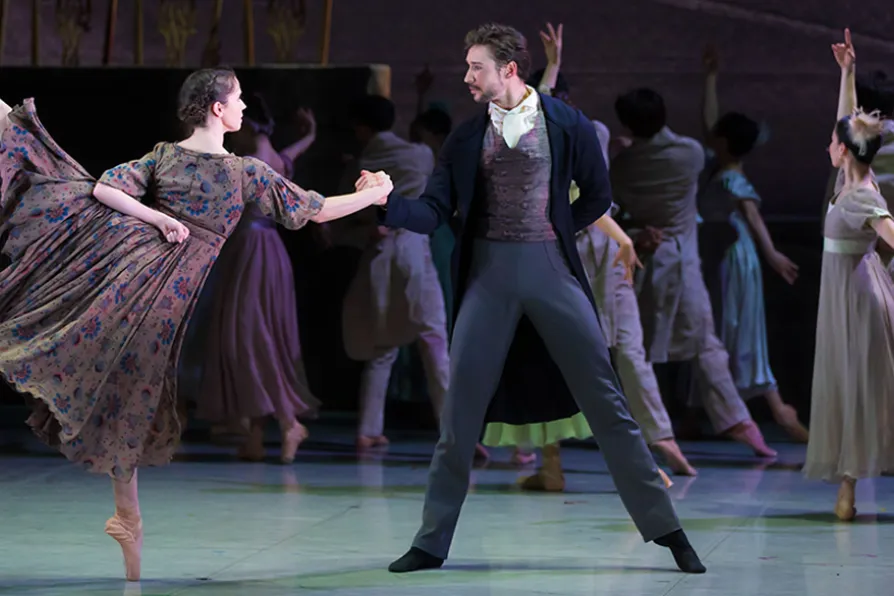JOE GILL speaks to the Palestinian students in Gaza whose testimony is collected in a remarkable anthology

 DANGEROUS LIASONS: Dominique Larose and Joseph Taylor in Jane Eyre
[Emily Nuttall]
DANGEROUS LIASONS: Dominique Larose and Joseph Taylor in Jane Eyre
[Emily Nuttall]
Jane Eyre, Northern Ballet
Leeds Grand Theatre
DRAMATISATIONS too often turn Charlotte Bronte’s Jane Eyre into a straight Gothic romance. Credit to Northern Ballet’s Cathy Marston, then, for giving due attention to its central theme as a bildungsroman.
The protagonist is split into child and adult to demonstrate her development. Rachael Gillespie excels as a stubborn and angry girl, her body tense and angular, her head lowered and surly as she battles with her bullying Aunt Reed (Harriet Marden). Dominique Larose picks up the tenseness as Jane transitions into adulthood, her hands clenched at her side, but her body softens and her movements gain grace as she gains power and independence.
This is a show that’s at its best with such small detail. Mr Rochester (Joseph Taylor) casually and cruelly bars Jane’s exit from a room with a single outstretched leg as he sprawls in a chair. Rows of identical schoolgirls scribble at their desks to convey the monotonous drudgery of life at Lowood School.
It has less success in heavy handed symbolism. The “D-men,” who represent Jane’s inner demons and the patriarchal barriers to independence, confuse the story line. Bertha (Amber Lewis), Rochester’s “mad” first wife, is played as a stereotype with flaming costume and bruised limbs. Yet there are fascinating, fleeting glimpses of a more complex character when her movements echo those of Jane. This creates a bond between the two and a warning of what could happen if Jane surrendered herself totally to Rochester.
As always with Northern Ballet, the company scenes shimmer with colour and gorgeous costumes, designed by Patrick Kinmonth. Here, a party thrown by Rochester combines drama — a servant being injured off-stage by Bertha — with jealousy — a despondent Jane feeling inferior to socialite Blanche Ingram. The scene is subtly supported by Philip Feeney’s score, combining original and 19th-century music.
This is nonetheless Jane’s story rather than an ensemble piece. Larose convinces in both her angry and tender moments, and especially in the final scenes when she duets with a humbled Rochester. It’s somewhat of a masterstroke that Marston doesn’t close with the lovers but with Jane alone, independent and confidentially staring into the audience.
On tour until May 24. For venues and tickets see: northernballet.com

LEO BOIX, ANDY HEDGECOCK and MARIA DUARTE review Dreamers, It Was Just An Accident, Folktales, and Eternity

JAN WOOLF finds out where she came from and where she’s going amid Pete Townshend’s tribute to 1970s youth culture

PETER MASON is wowed (and a little baffled) by the undeniably ballet-like grace of flamenco











